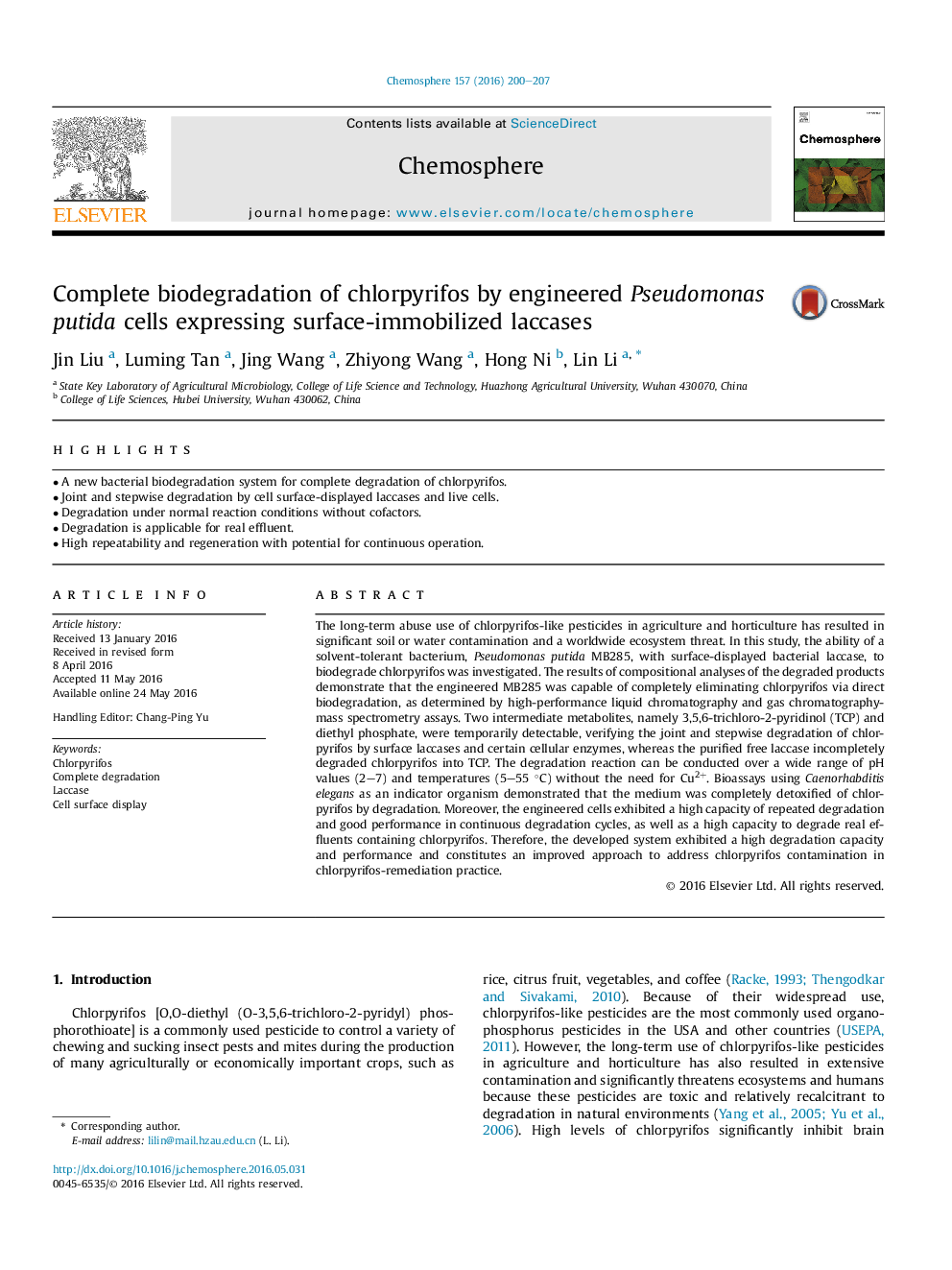| کد مقاله | کد نشریه | سال انتشار | مقاله انگلیسی | نسخه تمام متن |
|---|---|---|---|---|
| 4407620 | 1618814 | 2016 | 8 صفحه PDF | دانلود رایگان |

• A new bacterial biodegradation system for complete degradation of chlorpyrifos.
• Joint and stepwise degradation by cell surface-displayed laccases and live cells.
• Degradation under normal reaction conditions without cofactors.
• Degradation is applicable for real effluent.
• High repeatability and regeneration with potential for continuous operation.
The long-term abuse use of chlorpyrifos-like pesticides in agriculture and horticulture has resulted in significant soil or water contamination and a worldwide ecosystem threat. In this study, the ability of a solvent-tolerant bacterium, Pseudomonas putida MB285, with surface-displayed bacterial laccase, to biodegrade chlorpyrifos was investigated. The results of compositional analyses of the degraded products demonstrate that the engineered MB285 was capable of completely eliminating chlorpyrifos via direct biodegradation, as determined by high-performance liquid chromatography and gas chromatography-mass spectrometry assays. Two intermediate metabolites, namely 3,5,6-trichloro-2-pyridinol (TCP) and diethyl phosphate, were temporarily detectable, verifying the joint and stepwise degradation of chlorpyrifos by surface laccases and certain cellular enzymes, whereas the purified free laccase incompletely degraded chlorpyrifos into TCP. The degradation reaction can be conducted over a wide range of pH values (2–7) and temperatures (5–55 °C) without the need for Cu2+. Bioassays using Caenorhabditis elegans as an indicator organism demonstrated that the medium was completely detoxified of chlorpyrifos by degradation. Moreover, the engineered cells exhibited a high capacity of repeated degradation and good performance in continuous degradation cycles, as well as a high capacity to degrade real effluents containing chlorpyrifos. Therefore, the developed system exhibited a high degradation capacity and performance and constitutes an improved approach to address chlorpyrifos contamination in chlorpyrifos-remediation practice.
Journal: Chemosphere - Volume 157, August 2016, Pages 200–207